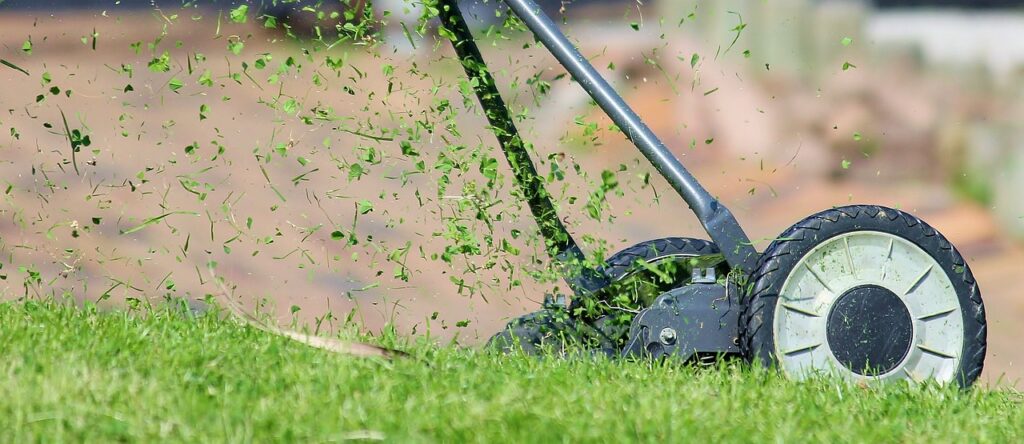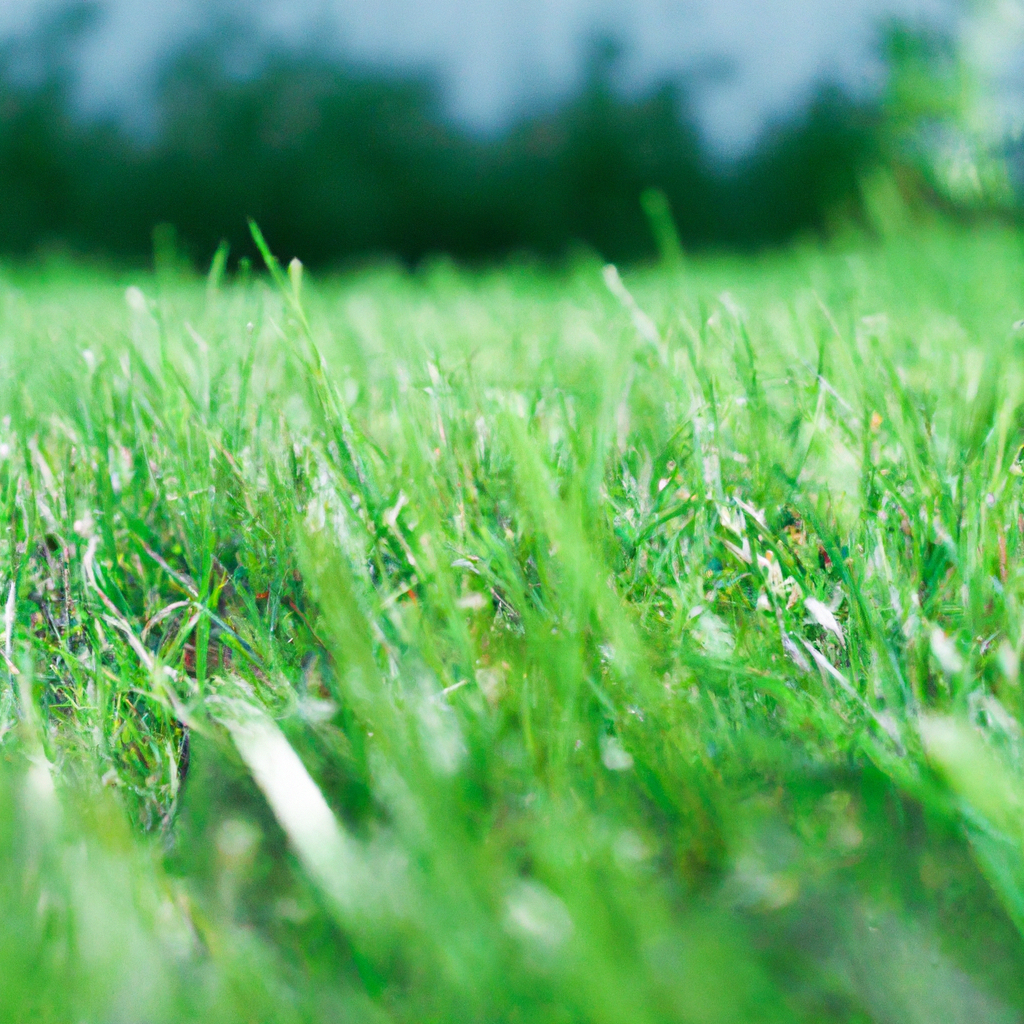Is your lawn looking a little lackluster? Perhaps it’s time for a rejuvenation. In this article, we will explore the essential tips and techniques for prepping your lawn for overseeding. Whether your lawn is overrun with weeds or just needs a little extra TLC, overseeding can help you achieve a lush and healthy landscape. From choosing the right grass seed to properly preparing the soil, we will guide you through the process step by step, ensuring your lawn is ready for its best and greenest version yet.
Choosing the right time to overseed
Understanding the best season for overseeding
When it comes to overseeding your lawn, timing is crucial. The best season to overseed depends on various factors, including the type of grass you have and the climate in your region. In general, the optimal time for overseeding is during the early fall or early spring. These seasons provide the perfect conditions for seed germination and establishment.
Considering temperature and weather conditions
Before starting the overseeding process, it’s important to consider the temperature and weather conditions in your area. Overseeding during extremely hot or cold weather can hinder seed germination and growth. Ideally, the daytime temperatures should range between 60 and 75 degrees Fahrenheit, with cool nights and moderate humidity.
Assessing the health of your existing lawn
Another crucial factor to consider before overseeding is the health of your existing lawn. If your lawn is struggling with bare or thin areas, overseeding can help rejuvenate it. However, if your lawn is severely damaged or unhealthy, it may be necessary to address the underlying issues before overseeding. Conduct a thorough assessment of your lawn’s health to determine if overseeding is the right solution.
Preparing the lawn for overseeding
Mowing the lawn to an appropriate height
Before overseeding, it’s crucial to mow your lawn to an appropriate height. Set the mower blades to the lowest recommended height for your grass type. By mowing the lawn shorter, you create better conditions for seed to soil contact, ensuring optimal seed germination and growth.
Removing debris and dethatching the lawn
To create a clean and receptive surface for overseeding, it’s essential to remove any debris from your lawn. Clearing away leaves, sticks, and other debris allows the grass seed to make direct contact with the soil. Additionally, if your lawn has a thatch layer more than half an inch thick, consider dethatching to promote better seed-to-soil contact.
Aerating the soil for optimal seed absorption
Aerating the soil is a critical step in preparing your lawn for overseeding. By creating small holes in the soil, aeration improves air circulation and allows moisture and nutrients to reach the roots more effectively. This process also helps break up compacted soil, providing an ideal environment for the newly overseeded grass to establish.
Testing and adjusting the soil’s pH level
Before overseeding, it’s essential to test your soil’s pH level. Grass thrives in a slightly acidic to neutral pH range of 6.0 to 7.5. If the pH level is outside this range, it may hinder the germination and growth of your grass seed. Adjusting the soil’s pH level using the appropriate amendments will ensure optimal conditions for overseeding.

Selecting the appropriate grass seed
Identifying your region’s grass types
When choosing the right grass seed for overseeding, it’s crucial to consider the grass types that are well-suited for your region. Different grass species thrive in specific climates and soil conditions. Research and identify the grass types that are most suitable for your region to achieve the best results.
Understanding the different seed mixtures available
There are various seed mixtures available on the market, each catering to different lawn conditions and purposes. Some seed mixtures are designed for shaded areas, while others are meant for high-traffic or drought-prone areas. Understanding the different seed mixtures available will help you select the one that best meets your lawn’s needs.
Considering the specific needs and attributes of seed varieties
In addition to seed mixtures, it’s essential to consider the specific needs and attributes of different seed varieties. Some grass seed varieties require more sunlight, while others are more tolerant to heat or cold. Assess your lawn’s conditions and choose seed varieties that can thrive in those conditions to ensure successful overseeding.
Calculating and purchasing the correct amount of seed
Measuring the square footage of your lawn
Before purchasing grass seed, it’s important to accurately measure the square footage of your lawn. Multiply the length and width of each lawn section to determine its total area. Add up the areas of all sections to get the total square footage. This measurement will help you calculate the amount of seed needed for overseeding.
Determining the appropriate overseeding rate
The overseeding rate refers to the amount of seed to apply per square foot of lawn. The recommended overseeding rate varies depending on the grass species and the current condition of your lawn. Generally, overseeding rates range from 5 to 10 pounds per 1,000 square feet of lawn. Consulting with a local lawn care professional or referring to seed packaging instructions can help determine the appropriate overseeding rate.
Accounting for any bare or thin areas
If your lawn has bare or thin areas, it’s important to consider them when calculating the amount of seed needed. These areas may require a higher overseeding rate to ensure adequate seed coverage and promote healthy growth. Take note of the specific requirements for overseeding bare or thin areas and adjust your seed calculations accordingly.
Choosing a reputable seed supplier
To ensure the success of your overseeding efforts, it’s crucial to choose a reputable seed supplier. Look for suppliers that provide high-quality seed and have positive customer reviews. A reputable supplier will offer reliable information on seed varieties, overseeding rates, and any additional guidance you may need for a successful overseeding process.

Applying the grass seed
Using a broadcast spreader for large areas
For larger lawn areas, using a broadcast spreader is an efficient method to apply grass seed evenly. Adjust the spreader settings according to the overseeding rate recommended for your grass type. Walk at a steady pace, making multiple passes in a crisscross pattern to ensure thorough seed distribution. Be mindful of any areas with existing grass since overspreading can prevent optimal growth.
Hand-seeding smaller or irregularly shaped areas
When it comes to smaller or irregularly shaped areas, hand-seeding is the preferred method. Fill a seed spreader or shaker container with the desired amount of grass seed. Walk slowly and evenly distribute the seed over the target areas, making sure to cover them evenly. Take extra care to seed any bare or thin areas more densely for better coverage.
Ensuring even seed distribution and coverage
Regardless of the method you choose, it’s crucial to ensure even seed distribution and coverage. Uneven seeding can result in patchy growth and an inconsistent appearance. Pay attention to overlapping patterns and avoid excessive seed concentration in certain areas. This will help achieve uniform growth and maximize the success of your overseeding efforts.
Implementing proper watering techniques
Creating a watering schedule for newly seeded areas
Watering is a critical aspect of successful overseeding. After applying the grass seed, it’s crucial to create a watering schedule for the newly seeded areas. Initially, water the seeded areas lightly multiple times a day to keep the soil moist. As the grass seed germinates and establishes, gradually reduce the frequency and increase the amount of water per watering session.
Using sprinklers or irrigation systems correctly
To ensure effective watering, it’s important to use sprinklers or irrigation systems correctly. Set up sprinklers in a way that avoids excessive water runoff and provides even coverage. Adjust the watering duration and frequency based on your lawn’s needs, taking into account factors such as soil type and weather conditions. Regularly monitor the soil moisture to determine if any adjustments are necessary.
Avoiding overwatering to prevent seed washout
While watering is crucial for overseeding success, overwatering can lead to seed washout and hinder germination. Avoid excessive watering that causes puddles or runoff. This not only wastes water but can also displace the grass seed and inhibit its growth. Maintain a careful balance between providing adequate moisture and avoiding overwatering to ensure optimal seed germination and establishment.

Providing essential aftercare for overseeded lawn
Monitoring soil moisture levels
After the initial watering, it’s important to monitor the soil moisture levels regularly. Use a moisture meter or perform the screwdriver test to assess the moisture content. The soil should feel moist but not saturated. Adjust your watering schedule accordingly to provide consistent moisture for the newly overseeded lawn.
Preventing excessive foot traffic on the newly seeded areas
To give the grass seed the best chance to establish and grow, it’s essential to prevent excessive foot traffic on the newly seeded areas. Avoid walking, playing, or running on the overseeded lawn until the new grass has reached a height of at least 3 inches. This will allow the roots to establish and minimize the risk of damaging the fragile young grass.
Mowing and maintaining proper lawn height
Proper lawn maintenance is crucial for the long-term health of your overseeded lawn. Once the grass reaches a height of 3 inches, it’s time for the first mowing. Set the mower blades to the recommended height for your grass type and remove no more than one-third of the blade’s length. Regular mowing at the appropriate height will promote healthy growth and prevent the lawn from becoming too dense or choked with thatch.
Controlling weed growth in the overseeded lawn
Weed control is essential to maintain the integrity of your overseeded lawn. After the grass seed has germinated and established, consider applying a pre-emergent herbicide to prevent weed growth. Follow the product instructions carefully, and avoid applying the herbicide too close to the time of overseeding. Additionally, hand-pull any visible weeds to ensure they do not compete with the newly germinated grass for resources.
Dealing with potential challenges and setbacks
Identifying common problems during the overseeding process
During the overseeding process, it’s important to be aware of common problems that may arise. These can include poor seed germination, uneven growth, or the presence of weeds. Regularly inspect your lawn and identify any issues early on to implement appropriate solutions and prevent further setbacks.
Troubleshooting issues with germination and growth
If you encounter problems with seed germination or growth, troubleshooting becomes essential. Issues such as insufficient moisture, improper seed-to-soil contact, or inadequate seed coverage can hinder the overseeding process. Addressing these issues promptly, through adjustments to watering, additional seed application, or better seed-to-soil contact, can help overcome challenges and promote healthy growth.
Implementing solutions to pest and disease issues
Pests and diseases can pose challenges to the success of overseeding. Keep a vigilant eye out for signs of pests or diseases, such as brown patches or abnormal growth. If identified, consult a professional or local lawn care expert to identify the specific issue and implement appropriate solutions. Timely intervention can prevent further damage and promote a healthy, lush lawn.

Understanding the importance of patience and ongoing maintenance
Realistic expectations for overseeding results
It’s important to have realistic expectations when it comes to overseeding results. While overseeding can greatly improve the health and appearance of your lawn, it’s not an overnight solution. Grass seed takes time to germinate, establish, and fill in bare or thin areas. Be patient and allow the newly overseeded grass to grow and develop over time.
Establishing a long-term lawn care routine
Successful overseeding is not a one-time task but part of a long-term lawn care routine. Establishing a regular maintenance schedule is key to maintaining a healthy lawn. This includes regular mowing, watering, fertilizing, and weed control. Consistency and adherence to a well-rounded lawn care routine will keep your overseeded lawn thriving year after year.
Regular fertilization and weed control practices
Fertilization and weed control are integral parts of maintaining a healthy overseeded lawn. Regularly fertilize your lawn to provide essential nutrients for growth and fill in any nutrient deficiencies. Additionally, implement a weed control regimen to prevent invasive weeds from competing with the grass for nutrients and space. Following a consistent fertilization and weed control schedule will help keep your overseeded lawn vibrant and weed-free.
Repeating overseeding as necessary to maintain a healthy lawn
Over time, your lawn might require additional overseeding to keep it healthy and lush. As grass ages, it can become stressed or develop thin areas. By repeating the overseeding process as necessary, you can rejuvenate your lawn and ensure continued growth and vitality. Pay attention to the condition of your lawn and address any bare or thin areas promptly through overseeding.
In conclusion, overseeding your lawn is a valuable technique to promote a healthy and vibrant lawn. By understanding the best time for overseeding, properly preparing the lawn, selecting the appropriate grass seed, calculating the correct amount of seed, and applying it correctly, you can set the foundation for successful overseeding. Implementing proper watering techniques, providing essential aftercare, and dealing with potential challenges are crucial for the long-term health of your overseeded lawn. Remember to have patience and establish an ongoing maintenance routine, including fertilization, weed control, and periodic overseeding, to ensure a beautiful and thriving lawn year after year.
